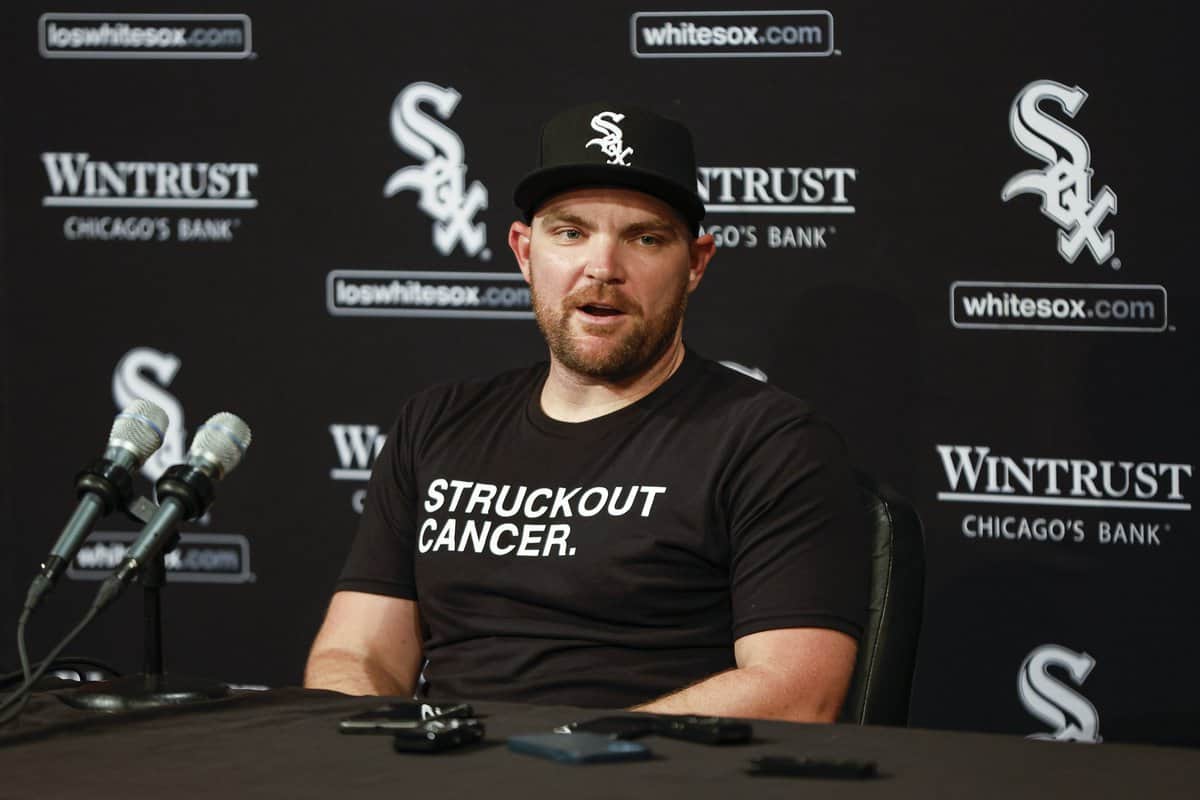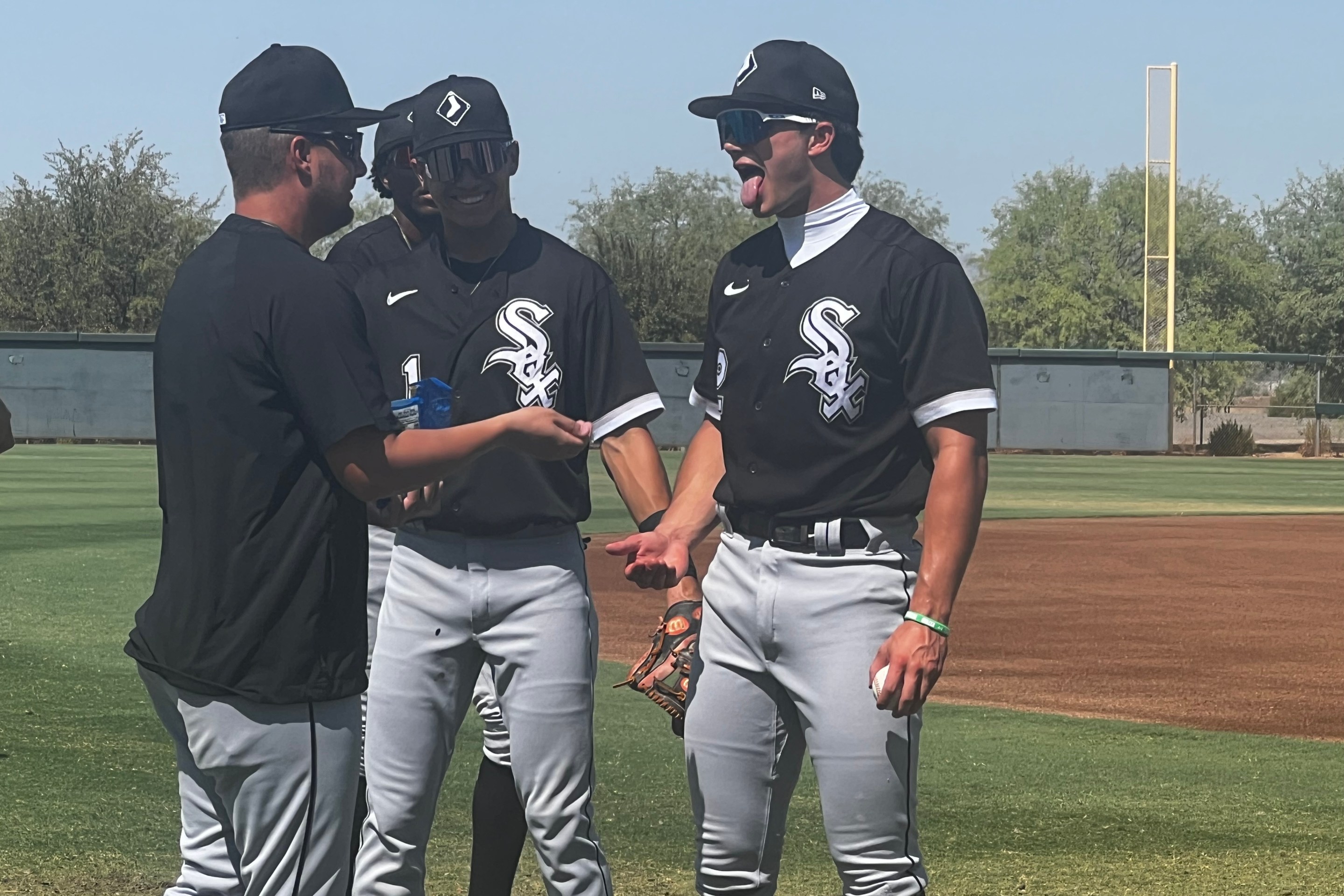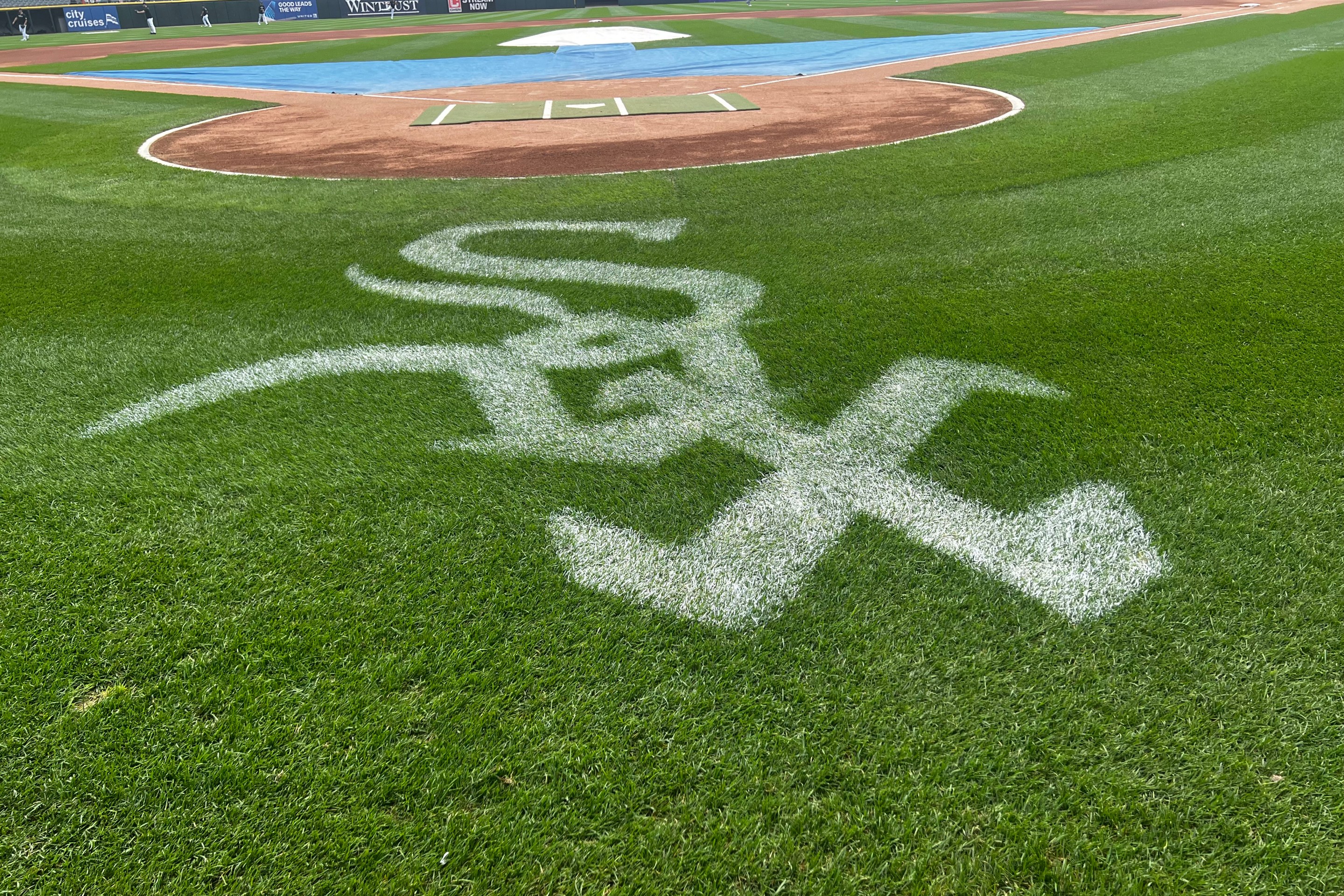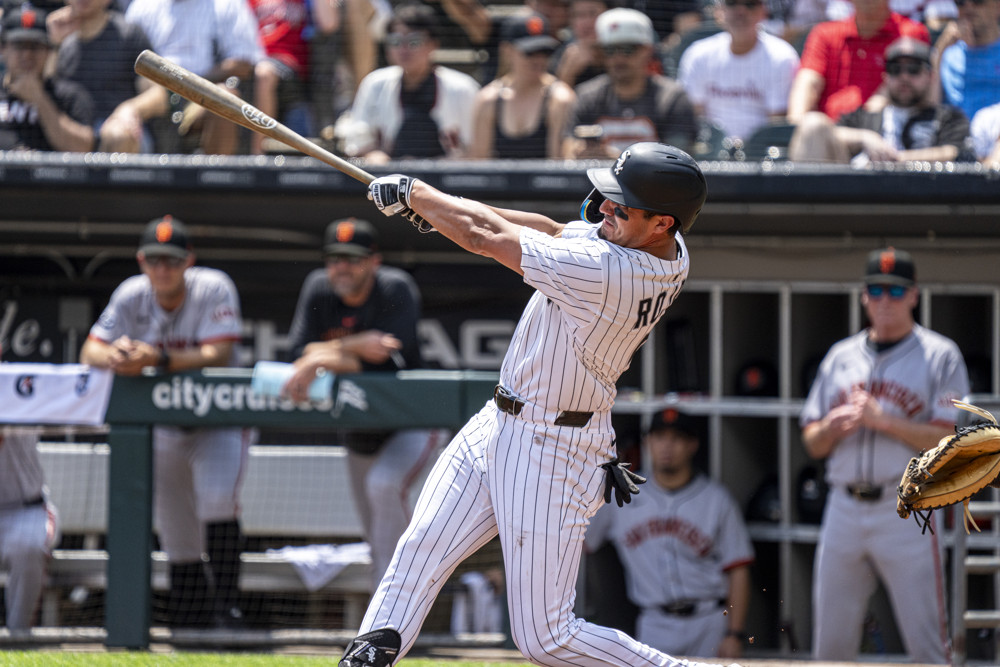Liam Hendriks won the American League's Comeback Player of the Year on Thursday, and it might've been the one Players Choice Award that wasn't really a choice at all.
Hendriks' return from non-Hodgkin lymphoma was inspirational, regardless of the fact that it was cut short after five outings due to a torn ulnar collateral ligament that required Tommy John surgery. Even after he was sidelined for the season, he continued to raise money for lymphoma research and meet with cancer patients both in Chicago and on the White Sox's road trips. He was present during Game 5 of the World Series in Phoenix on Wednesday to promote Major League Baseball's Stand Up to Cancer partnership.
The glow of this honor might be short-lived as it pertains to the White Sox, because Game 5 ended up being the last game of the World Series, and its conclusion officially started the clock on deciding Hendriks' future with the team.
The White Sox have until Monday to exercise Hendriks' $15 million option for 2024, or buy him out for $15 million, paid in 10 annual installments of $1.5 million. It's the more complicated of two emotionally charged decisions, as the White Sox also have to decide whether to pay Tim Anderson $14 million next season, or buy him out for $1 million.
Some may consider both decisions straightforward, but they require different kinds of calculations. Anderson's situation presents variables. Barring an unforeseen injury, he'll be playing somewhere in 2024, and you'll have to compare his projected performance against that of his replacement(s), along with the opportunity cost of the freed-up funds, to come to a decision, and all of those elements are up for varying degrees of debate.
Conversely, Hendriks will spend most of the year rehabbing from Tommy John surgery. If he experiences few setbacks and sticks to the more aggressive side of the timetable, he might be able to return by early September, but it'd be unwise to expect closer-grade performance, or a White Sox team for whom the quality of closer actually matters.
In terms of basic economics, it makes complete sense to start the deferred payment program, because while it adds up to the same figure he's owed for 2024 if the Sox picked up the option, $15 million doesn't necessarily equal $15 million due to the time value of money.
When Dave Cameron ran FanGraphs, he did a good job of explaining Net Present Value for contracts with significant deferred money, which helped non-economists like me fully grasp why teams were far more willing to meet Scott Boras' total contract demands if given a lot of extra interest-free years to pay for it. Hendriks isn't Max Scherzer or Chris Davis, but it's still worth running his $15 million in 2024 dollars through an NPV calculator to understand how the White Sox might be accounting for it.
If you assume 4 percent inflation over the duration of the buyout period, Hendriks would effectively earn something like $2.5 million less over the next 10 years, compared to the Sox paying him a lump sum up front, because $1.5 million in 2024 dollars is worth less in each passing year:
- 2024: $1.5M
- 2025: $1.442M
- 2026: $1.387M
- 2027: $1.335M
- 2028: $1.282M
- 2029: $1.185M
- 2030: $1.140M
- 2031: $1.096M
- 2032: $1.054M
- 2033: $1.013M
- Total: $12.435M
That's why teams are willing to go this route, even if it presents a minor accounting headache during future offseason planning. That's why buying out Hendriks appears to be a no-brainer on paper, but there are a couple of circumstances that might change some minds.
For instance, if the White Sox have zero designs on trying to contend in 2024 while waiting out the obligations for Yoán Moncada and Eloy Jiménez, but want every single resource available to help the 2025 team, then maybe it makes some sense to effectively eat that $2.5 million up front. Also, while I'm uncomfortable putting a dollar value on Hendriks' charitable endeavors because it doesn't seem like the point and I wouldn't know how to come to an estimate in the first place, the Sox might have other areas of the organization that really benefit from the continued employment of one of the few players fans are proud to have around.
The first scenario doesn't seem worth it, because it would take a scorched-earth fire sale to make $13.5 million in freed-up 2024 funds a negligible figure. As for the second, this situation has such specific pressures and benefits that I could see a possibility of the parties agreeing to split the difference and restructure the club option into something like a $7.5 million salary in 2024 with $7.5 million in deferred salary.
The most likely outcome is that the White Sox decide to move on because they don't see it as a moral obligation. The Sox structured Hendriks' $54 million contract in a unique way because Jerry Reinsdorf didn't want to guarantee a fourth year, so much so that he negged his major addition shortly after the signing was official:
“There was no way I was going to commit to a regular four-year contract,’’ White Sox chairman Jerry Reinsdorf said, “so I was thinking, 'how can we bridge the gap here?'" [...]
“While I knew we weren’t really going to save any money,’’ Reinsdorf said, “the reason I proposed 10 years it is that it would give us some cash flow relief. The player would get the same money he was going to get, but if we had to let him go, I didn’t want to have a $15 million payment for the year if we had to replace him. It just made it easier to absorb the pain if we had to let him go."
Also, Hendriks said he had been pitching with a partially torn ulnar collateral ligament since 2008. His furious return from lymphoma probably didn't help matters, but given the pre-existing condition, 2023 could've been the year where he finally succumbed to surgery even if cancer never entered the conversation.
At the end of the season, Hendriks sounded resigned to the idea that the White Sox will buy him out ...
“I’m hoping they pick it up. I mean, it’s a longshot, but look, it is what it is, and I hope to be here,” he said.
... but he stated a case for an alternative arrangement:
“Either way, I get paid, but I want to be part of this organization,” he said. “I’ve made that very clear from day one. It’s not my decision, it’s up to them. The ball is in their court, and I’d love to figure something out.”
Hendriks said that paying an injured reliever isn’t generally on the to-do list of a general manager, but that he feels confident that he could be useful for the White Sox whether on the mound or not.
“Even when I’m not playing, I can be a positive influence on some of these guys,” he said.
Obviously it benefits Hendriks if the White Sox pay him more money sooner, but there's also little reason to doubt his earnestness. He didn't have to do everything he did after injuring his elbow, but he demonstrated a desire to be as good as he could possibly be for it.






